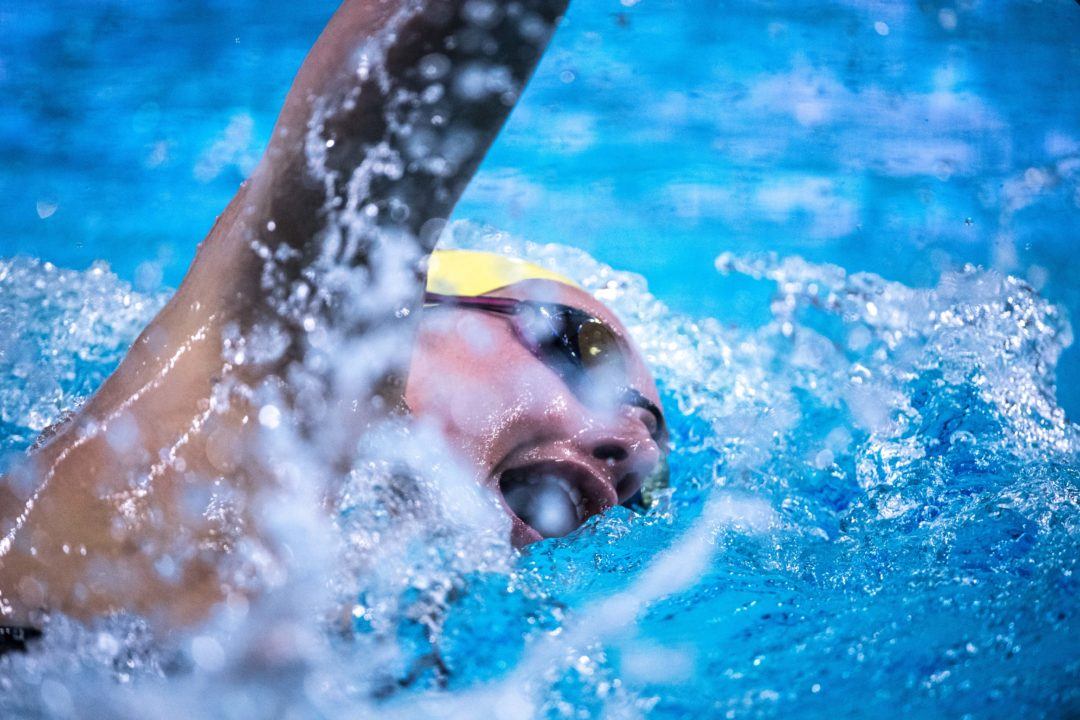Courtesy of Gary Hall Sr., 10-time World Record Holder, 3-time Olympian, 1976 Olympic Games US Flagbearer and The Race Club co-founder.
At The Race Club, I often ask our campers where is the fastest place one can swim in the water. As you can imagine, most of them say below the surface, but the answer is, of course, above the water, or hydroplaning. Unfortunately, it is estimated that in order to hydroplane, the human body needs to be going around 15 miles an hour, or faster. With world record speed in the 50 at just over 5 miles an hour, I don’t think we will be seeing anyone hydroplaning soon.
Under Water
So, if we can’t swim on top of the water, where is the next best place to be? Under water is the next best place (our campers aren’t too far off). In fact, swimmers with very strong kicks are able to go faster underwater, with legs only, than they can swim on the surface with arms and legs going at full speed. Part of the reason for this is because the pulling motion contributes to both propulsion and frontal drag. However, the biggest reason is because of surface or wave drag.
Surface Drag
Surface drag occurs only when the swimmer is on the surface and is caused by the body moving through the interface between air and water. Just like a boat, swimmers create a small bow wave, mostly from the head, as they move through the water on the surface. Surface drag is as significant for a swimmer as it is for a submarine. Submarines go much faster under water than they go on the surface, and so do humans.
When we speak of underwater movement of the swimmer, most coaches think in terms of starts and turns, and after 15 meters the swimmer is, by the rules, relegated to the surface. Indeed, the underwater speed on both starts and turns is extremely important. What most coaches don’t realize is that each stroke has an underwater phase…or at least it should. Breaststroke is the most obvious one, where in all but the 50, where stroke rates approach 60 or higher, the body submerges completely during the strike phase after the kick propulsion. That is when the breaststroker achieves the greatest speed; when he/she surges forward.
Under water surge phase in freestyle, fly and backstroke
Though it is less noticeable, there is also an under water surge phase in freestyle, fly and backstroke. The under water surge should occur at the peak velocity in the stroke cycle, so the drag coefficient is lowest when the speed is highest. Frontal drag is proportional to the speed squared, not just the speed. In freestyle, the peak velocity occurs when one hand first enters the water. For hybrid freestylers, like Phelps, Lochte or Ledecky, or hip-driven freestylers, liked Sun Yang, the surge occurs right after the breath stroke, when the head submerges momentarily. In butterfly, the underwater surge occurs after the second down kick, when both hands have entered the water and head is tucked down. In backstroke, one often sees a slight trickle of water come over the face of the swimmer as the hand is nearing entry into the water, the surge point.
In order to surge
In order to surge, a swimmer has to create propulsive forces to surge with, and, at the right time, the swimmer must be under water. The propulsion comes from two sources substantially, the hands and the feet. One can augment the propulsive forces of the hands and feet by using coupling motions in all four strokes. In freestyle and backstroke, the coupling motions are the rotating body and, depending on the stroke rate, the recovering arm. In breaststroke, the coupling motions that augment the kicking force are the downward pressing of the upper body and snapping down of the head. The coupling motion that augments the pull is the upward motion of the upper body and head. In butterfly, the coupling motions are primarily the arms swinging forward and the head snapping down, timed with the second down kick. We are just beginning to understand how important these coupling motions are to swimmers to increase power, speed and distance per stroke.
Stroke Rates & The Surge
I never would have believed that someone could swim a 200 meter butterfly in 1:55 with a stroke rate of 31 (typical stroke rates are 48 or so in the 200). Yet Yajima Yuma from Japan did that in the World University Games recently, maximizing the force of his strong kick with an elevated diving body, strong forward arm swing and head snapping down, all coupling motions, into an underwater surge in a streamlined position. That swim is a testament to the power of coupling.
Do not underestimate the importance of getting the head and most of the body underwater during the surge phases of each stroke. One millimeter under water is enough to eliminate the surface drag. Although in the 50 sprints, because of the high stroke rates, we would be hard pressed to say that there is any significant surge point, in all other races, surging underwater is a key to fast swimming.
Best in swimming,
Gary Sr.

Gary Hall, Sr., Technical Director and Head Coach of The Race Club (courtesy of TRC)
Like The Race Club on Facebook
Follow The Race Club on Instagram
Follow The Race Club on Twitter
Connect to The Race Club / Gary Hall Sr. on Linkedin
THE RACE CLUB
Because Life is Worth Swimming, our mission is to promote swimming through sport, lifelong enjoyment, and good health benefits. Our objective is for each member of and each participant in The Race Club to improve his or her swimming performances, health, and self-esteem through our educational programs, services and creativity. We strive to help each member of The Race Club overcome challenges and reach his or her individual life goals.
 The Race Club provides facilities, coaching, training, technical instruction, video, fitness and health programs for swimmers of all ages and abilities. Race Club swim camps are designed and tailored to satisfy each swimmer’s needs, whether one is trying to reach the Olympic Games or simply improve one’s fitness. Our programs are suitable for beginner swimmers, pleasure swimmers, fitness swimmers, USA swimming or YMCA swimmers, or triathletes; anyone who wants to improve swimming skills. All of our Race Club members share an enjoyment of being in the water and use swimming to stimulate a more active mind and body.
The Race Club provides facilities, coaching, training, technical instruction, video, fitness and health programs for swimmers of all ages and abilities. Race Club swim camps are designed and tailored to satisfy each swimmer’s needs, whether one is trying to reach the Olympic Games or simply improve one’s fitness. Our programs are suitable for beginner swimmers, pleasure swimmers, fitness swimmers, USA swimming or YMCA swimmers, or triathletes; anyone who wants to improve swimming skills. All of our Race Club members share an enjoyment of being in the water and use swimming to stimulate a more active mind and body.

i can benefit from your articles a lot. hope for participating the campus’ training.
We hope to to see you soon in Islamorada or Coronado!
GREAT article thank you so much – my son is an age group swimmer and is just beginning to appreciate the finer details of each stroke.
Thank you. Swimming is a detail sport!
It’s an interesting article; is there an accompanying video to demonstrate the concepts?
Other than the video of Yajima on youtube, we don’t yet have any video using this technique. I have found that this is an excellent technique for Masters swimmers trying to race butterfly…particularly anything over 50 meters.
I study a lot of biomechanics of swimming on my own as a hobby, and this is one of the most cutting edge hydrodynamics related article I’ve ever seen. Congrats to Hall Sr on pushing the boundaries of the fine details of techniques used by elite swimmers.
I personally believe this has been a huge part of the 100/200M fly WR drops by men. Generating tremendous propulsion through the beginning of the pull and surging just under the surface until reaching peak velocity through the 2nd kick when the momentum generated is amplified by the reduced frontal drag footprint as the hips and body reach its peak height… flying over the surface :).
Eloquent description.
Thank you.
I watched a video of Yajima Yuma- I’ve never seen anyone swim quite like that. 11 strokes on 1st 50M, then 14,14, and 15. Wow. I do think the surge is quite visible when you watch Phelps swim, but nothing like Yuma. If Yuma could find a happy medium of surge and turnover, there’s no telling what he could do. Thanks Gary for another great technique article.
He would be better served by changing his technique to a conventional 48-50 stroke rate fly in the final 25 meters or so. One can only go so fast with a 30 stroke rate.